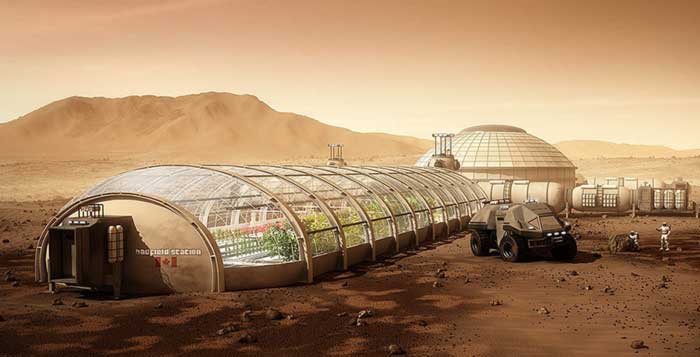Elon Musk prepares to colonize Mars in 2024
On Sept. 27, 2016, SpaceX founder and CEO Elon Musk announced the company’s ambitious plans to colonize Mars. Musk has been a long-time advocate for Mars discovery and exploration, wanting to build a greenhouse on the Red Planet as well as the futuristic Hyperloop: a high-speed transportation system that would run between major cities. He is also the founder of electric car company Tesla Motors and is the chair of a solar energy company called SolarCity.
“[I am] an engineer and entrepreneur who builds and operates companies to solve environmental, social and economic challenges,” said Musk when asked to describe himself and his line of work.
Using the company’s proposed Interplanetary Transport System (ITS), which combines the most powerful rocket ever built with a sizable spaceship, SpaceX hopes to establish a permanent, self-sustaining city on Mars. American astrophysicist, cosmologist, author and science communicator Neil deGrasse Tyson is willing to fly to Mars with SpaceX as long as Musk meets a few key requirements.
“I really like Earth. So any space trip I take, I am double-checking that there is sufficient funds for me to return,” Tyson wrote during a Reddit “Ask Me Anything” (AMA) session on April 2. “Also, I am not taking that trip until Elon Musk send[s] his mother and brings her back alive. Then I am good for it.”
As of right now, only 12 people have ever set foot on an astronomical body other than Earth, all 12 being the Apollo astronauts who walked on the moon. SpaceX hopes to change this fact with its revolutionary plans and technology. As of right now, the cost per seat on Musk’s flight to Mars is a whopping ten billion dollars, but the utilization of ITS should reduce this price to $200,000 and maybe as low as $100,000.
Throughout the next 50 to 100 years, SpaceX plans on sending about one million people to Mars, the earliest of these trips beginning in the year 2024; however, this is only possible if everything goes perfectly. SpaceX will begin unmanned launches to the Red Planet as early as 2018 in order to form the ideal route in space from Earth to Mars and to work out any kinks in their designs. Because SpaceX wants to transport a large number of people to this unmanned territory, there would have to be a minimum of 1,000 flights to and from Mars. Each ship would carry a minimum of 100 passengers, meaning the colonization of Mars would require 10,000 flights in order to bring one million people to this planet. With time and better designs, these ships will most likely increase their capacity to 200 people. The average duration of the trip about the ITS ships is around 115 days. Depending on time of departure and other atmospheric factors, this trip could be minimized to 80 days and eventually 30 days.
Overall, this idea of colonizing Mars is still up in the air, but with time, financial aid and hard work, it just might be possible. Musk is bringing human beings one step closer to becoming an interplanetary species.
Your donation will support the student journalists of Calabasas High School. Your contribution will allow us to purchase equipment and cover our annual website hosting costs.







